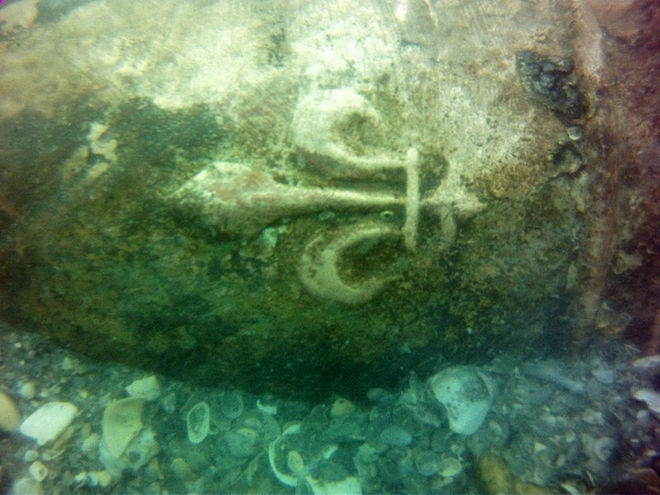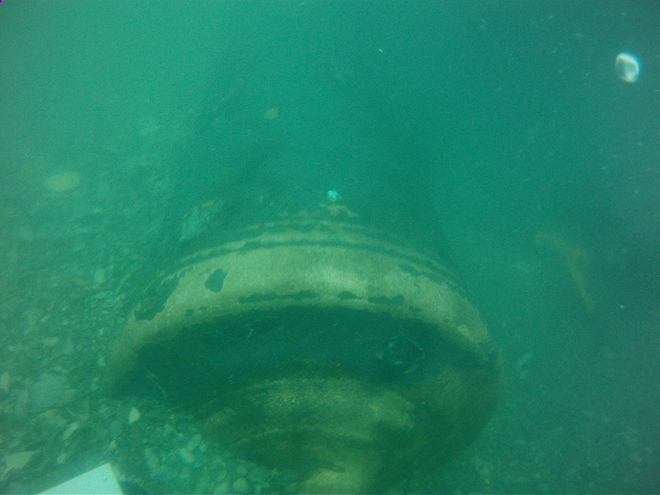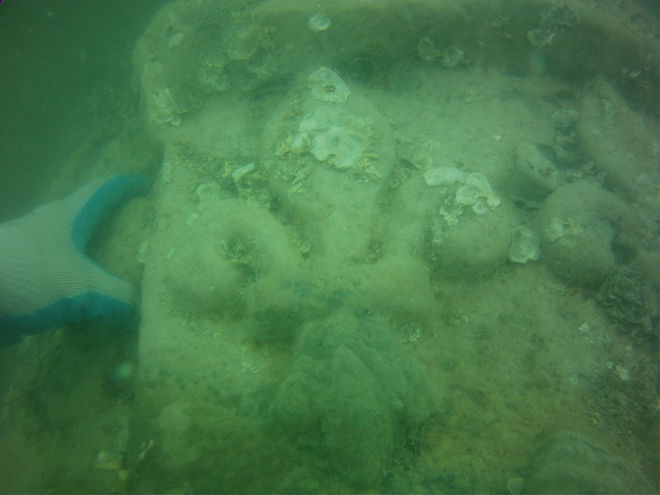Finding rocket debris off the coast of Cape Canaveral is an ordinary occurrence. However, finding a 16th century shipwreck is completely out of the ordinary.
A group of divers uncovered a variety of artifacts that go back to a time before the space program. These artifacts include 22 cannons and one marble monument. Experts believe that these artifacts date back to a 16th century Spanish ship.
All three of the cannons are made out of bronze. Two of the cannons measure to be 10 feet long and the other cannon measure to be 7 feet long. The marble monument is very unique. It is engraved with a coat of arms from the King of France, which has been dated back to a 1562 expedition by Jean Ribault.
Originally, experts believed that these items were apart of Ribault’s lost ships, which both sank during a storm in 1565. This would have been shortly after Jean Ribault’s expedition to Florida in 1562. However, records have been found that state that these newly found cannons were installed in Fort Caroline, which is now considered Jacksonville, Florida. The cannons were then seized in 1565 during a Spanish raid. Robert Pritchett, who works for the Global Marine Exploration, believes that these items were possibly taken away from Florida as booty. They would have been carried on Spanish ships that were headed towards Cuba before the ship was destroyed by a storm and sank to the bottom of the sea.
The remains of the ships were found scattered across a 4 mile radius. This particular shipwreck was discovered last year with an underwater magnetometer. Experts were able to determine that there were metal items just lying in the water. These cannons weren’t the only amazing discovery to be uncovered. Divers also found 12 anchors, 19 iron cannons, ammunition, and a stone grinding wheel.
Among these ancient artifacts, Robert Pritchett and his team have found a plethora of items from previous rocket launches. Pritchett has a special permit that allows his team to explore the areas near Cape Canaveral. These areas are covered in debris from previous launches. Pritchett comments that, “We’ve found hundreds and hundreds and hundreds of U.S. Air Force rockets that they were testing in 1948 forwards, and also shrimp boats, airplane engines, and airplanes.”
Pritchett adds, “We have found some of the actual rocket engines, and lots of rocket tubes – some of these things are 30, 40 feet long. Some are sticking halfway out on the surface, or sticking straight up out of the sand – there are literally thousands of them out there. We GPS and photograph everything we find, and we turn that stuff over to the U.S. Air Force, because one day, it will be valuable to someone for a historical reason.”
Currently, Pritchett is working on getting a permit to recover the debris from the seafloor. Once Florida officials approve his permit, he will be able to recover these artifacts from the sea.
Pritchett has a lot more to worry about than we could ever imagine. “We’ve been letting the state [of Florida] know that these artifacts are at the jeopardy of looters, and of the weather. These cannons are worth over a million dollars apiece – so if looters could find out the location, then a piece of history is gone forever, because it’s going to be sold on the black market,” said Pritchett.
More information will be released when archaeologists will have the ability to study them. Pritchett comments that, “It’s a mystery at this point, and until we bring all these items up and study them, we’re not going to know a lot more about them – only what we know from the little bit of research in the water that we’ve been able to do. But right now, we’re waiting on the state of Florida.”




